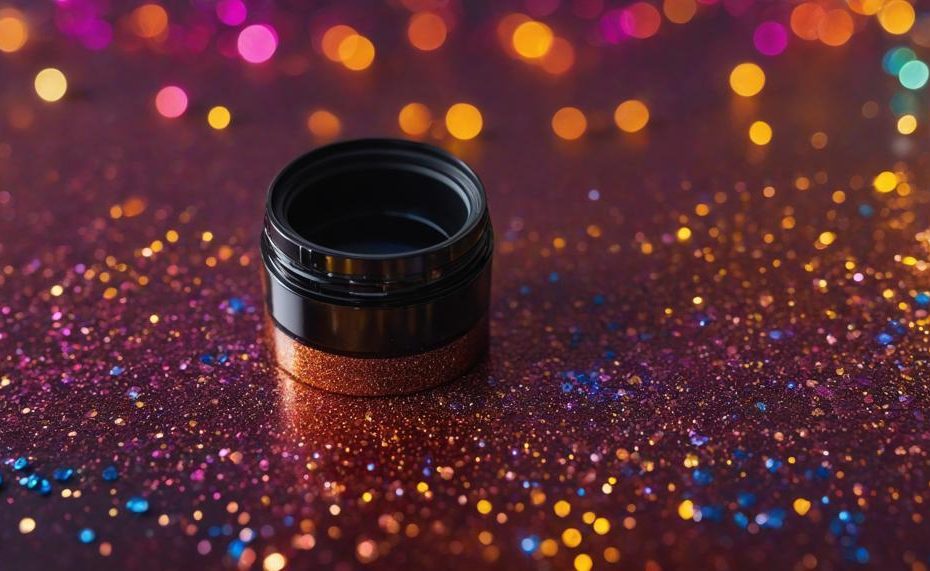Disposing of polyurethane varnish might not seem like a big deal at first glance, but doing it wrong can have serious environmental and health consequences. So, let’s dive right into how you can get rid of this stuff safely and responsibly. Whether you’ve just finished a DIY project or you’re a professional, understanding the proper disposal methods is crucial.
First, check the varnish label. Manufacturers often provide specific instructions for safe disposal. If you’re unsure, reach out to your city’s waste management department. They can guide you on whether to schedule a pick-up or drop-off.
For those who prefer handling it themselves, there are several safe methods available. You can use kitty litter or newspaper to solidify small amounts of varnish, or invest in a commercial varnish hardener.
Another option is letting it dry out completely in a well-ventilated area. If the varnish is still usable, consider recycling it or donating it to a non-profit organization that can put it to good use. And don’t forget, oil-based varnishes are flammable and require extra care.
Key Takeaways:
- Check the Label: Always start by checking the product label for disposal instructions.
- Consult Local Waste Management: Contact your city’s waste management for the best disposal methods.
- Safe Disposal Options: Use kitty litter, newspaper, or varnish hardeners, or let the varnish dry completely.
- Consider Recycling: Donate usable varnish to non-profits or take it to recycling facilities.
- Handle Oil-Based Varnish with Care: Remember, it’s flammable and needs careful handling.
Proper disposal of polyurethane varnish isn’t just about following rules; it’s about protecting our environment and health. So next time you finish a project, take a moment to dispose of your varnish the right way.
Contents
- 1 What Should You Do When Disposing Of Polyurethane Varnish
- 2 How to Dispose of Polyurethane Varnish By Yourself
- 3 Think About Recycling the Polyurethane Varnish
- 3.1 Benefits of Recycling Polyurethane Varnish: Reduces Landfill Waste: Recycling polyurethane varnish significantly decreases the volume of waste directed to landfills. With packaging materials and containers contributing to 26% of U.S. waste, recycling these can conserve valuable landfill space. Environmental Protection: Proper recycling prevents harmful chemicals in polyurethane varnish from contaminating air, water, and soil. This containment mitigates risks to human health and the environment, reducing the release of toxic substances. Resource Conservation: By recycling, the raw materials and energy used in producing new varnish are conserved, promoting sustainability and reducing the demand for virgin resources. Community Benefits: Usable varnish can be donated to local organizations or individuals, extending the product’s life and aiding community projects. Effective Methods for Recycling Polyurethane Varnish:
- 3.2 Steps for Effective Recycling:
- 4 Conclusion
What Should You Do When Disposing Of Polyurethane Varnish
| Step | Action | Details |
| 1 | Check the Label | Read manufacturer instructions for disposal. |
| 2 | Contact Local Waste Management | Get guidelines and schedule pick-up/drop-off if available. |
| 3 | Safe Disposal Methods |
|
| 4 | Recycling Options |
|
| 5 | Special Considerations | Handle oil-based varnish with care due to flammability. |
How to Dispose of Polyurethane Varnish By Yourself
Properly disposing of polyurethane varnish ensures environmental safety and personal responsibility. Here are some methods:
Check the Label for Disposal Instructions
- Always read the manufacturer’s label for specific guidelines on disposal.
- Follow any special instructions provided to ensure safe disposal.
Contact Local Waste Management
- Reach out to your city’s waste management department.
- Arrange for a pick-up or drop-off appointment for hazardous materials.
Drying Out the Varnish
- Kitty Litter: Mix the varnish with kitty litter, which absorbs the liquid, making it safe to dispose of in regular trash.
- Newspaper: Layer the varnish with newspaper in a shallow container, allowing it to dry thoroughly before disposal.
Recycling
- If the varnish is water-based and still usable, consider recycling it.
- Contact local recycling companies or centres to see if they accept varnish.
Donation
- Donate usable polyurethane varnish to non-profit organizations.
- These organizations can provide the varnish to individuals or groups in need.
Using Commercial Hardeners
- Apply commercial hardeners to the varnish as directed to solidify it, making it safer for disposal in regular trash.
Handling Oil-Based Varnish
- Due to its flammability, oil-based varnish requires special care.
- Ensure it is completely dried or use designated disposal services for hazardous waste.
Think About Recycling the Polyurethane Varnish
Recycling polyurethane varnish presents several key benefits and can be executed effectively through specific methods.
Benefits of Recycling Polyurethane Varnish:
Reduces Landfill Waste:
Recycling polyurethane varnish significantly decreases the volume of waste directed to landfills. With packaging materials and containers contributing to 26% of U.S. waste, recycling these can conserve valuable landfill space.
Environmental Protection:
Proper recycling prevents harmful chemicals in polyurethane varnish from contaminating air, water, and soil. This containment mitigates risks to human health and the environment, reducing the release of toxic substances.
Resource Conservation:
By recycling, the raw materials and energy used in producing new varnish are conserved, promoting sustainability and reducing the demand for virgin resources.
Community Benefits:
Usable varnish can be donated to local organizations or individuals, extending the product’s life and aiding community projects.
Effective Methods for Recycling Polyurethane Varnish:

-
Assess Usability:
-
Donation: If the varnish remains in good condition, consider donating it to local charities, schools, or community groups. This not only reduces waste but also supports community initiatives.
-
Specialized Recycling Facilities:
-
Find a Facility: Locate a facility that accepts hazardous materials. These facilities are equipped to handle and recycle polyurethane varnish safely.
-
Preparation: Ensure the varnish is properly contained and labelled before transportation.
-
Household Hazardous Waste Collection Programs:
-
Local Government Programs: Many local governments run these programs, providing a safe and convenient way to dispose of hazardous materials, including polyurethane varnish. Check local guidelines for participation.
-
Collection Events: Participate in community collection events for hazardous waste, often organized periodically.
-
Manufacturer Take-Back Programs:
-
Check with Manufacturers: Some manufacturers offer take-back programs for their products. Contact the manufacturer to see if this option is available.
Steps for Effective Recycling:
Step
Action
Details
1
Assess Usability
Determine if the varnish is still usable. If so, donate it.
2
Locate a Recycling Facility
Find a specialized facility that accepts hazardous materials.
3
Prepare for Disposal
Ensure varnish is properly contained and labelled.
4
Utilize Local Programs
Check local government programs or collection events for hazardous waste disposal.
5
Manufacturer Take-Back
Contact the manufacturer about possible take-back programs.
Recycling polyurethane varnish isn’t just about waste reduction—it’s about protecting our environment and responsibly managing resources.
By following these steps, we can ensure polyurethane varnish is handled in an eco-friendly and effective manner, benefiting both our communities and the planet.
Conclusion
Proper disposal of polyurethane varnish is a responsibility that extends beyond mere compliance; it’s about safeguarding our environment and health. If you’ve recently completed a DIY project or have leftover varnish, the steps you take next are crucial.
Start by scrutinizing the label for manufacturer guidelines. This initial check can often provide clear directions tailored to the specific product. If further guidance is needed, your city’s waste management department is a valuable resource, offering options for safe disposal.
For those preferring to handle it independently, several methods are available. Solidifying the varnish with kitty litter or newspaper, or using commercial hardeners, allows for safe disposal with regular trash. Alternatively, letting it air dry in a well-ventilated area is another effective solution.
Recycling is another thoughtful approach. Usable varnish can be a boon to local non-profits or community groups. Always check with local recycling facilities to see if they accept water-based varnish.
Oil-based varnishes require special attention due to their flammability. These should be handled with extra care and disposed of through designated hazardous waste services.
You may also like:
Reduces Landfill Waste:
Recycling polyurethane varnish significantly decreases the volume of waste directed to landfills. With packaging materials and containers contributing to 26% of U.S. waste, recycling these can conserve valuable landfill space.
Environmental Protection:
Proper recycling prevents harmful chemicals in polyurethane varnish from contaminating air, water, and soil. This containment mitigates risks to human health and the environment, reducing the release of toxic substances.
Resource Conservation:
By recycling, the raw materials and energy used in producing new varnish are conserved, promoting sustainability and reducing the demand for virgin resources.
Community Benefits:
Usable varnish can be donated to local organizations or individuals, extending the product’s life and aiding community projects.
Effective Methods for Recycling Polyurethane Varnish:

- Assess Usability:
- Donation: If the varnish remains in good condition, consider donating it to local charities, schools, or community groups. This not only reduces waste but also supports community initiatives.
- Specialized Recycling Facilities:
- Find a Facility: Locate a facility that accepts hazardous materials. These facilities are equipped to handle and recycle polyurethane varnish safely.
- Preparation: Ensure the varnish is properly contained and labelled before transportation.
- Household Hazardous Waste Collection Programs:
- Local Government Programs: Many local governments run these programs, providing a safe and convenient way to dispose of hazardous materials, including polyurethane varnish. Check local guidelines for participation.
- Collection Events: Participate in community collection events for hazardous waste, often organized periodically.
- Manufacturer Take-Back Programs:
- Check with Manufacturers: Some manufacturers offer take-back programs for their products. Contact the manufacturer to see if this option is available.
Steps for Effective Recycling:
| Step | Action | Details |
| 1 | Assess Usability | Determine if the varnish is still usable. If so, donate it. |
| 2 | Locate a Recycling Facility | Find a specialized facility that accepts hazardous materials. |
| 3 | Prepare for Disposal | Ensure varnish is properly contained and labelled. |
| 4 | Utilize Local Programs | Check local government programs or collection events for hazardous waste disposal. |
| 5 | Manufacturer Take-Back | Contact the manufacturer about possible take-back programs. |
Recycling polyurethane varnish isn’t just about waste reduction—it’s about protecting our environment and responsibly managing resources.
By following these steps, we can ensure polyurethane varnish is handled in an eco-friendly and effective manner, benefiting both our communities and the planet.
Conclusion
Proper disposal of polyurethane varnish is a responsibility that extends beyond mere compliance; it’s about safeguarding our environment and health. If you’ve recently completed a DIY project or have leftover varnish, the steps you take next are crucial.
Start by scrutinizing the label for manufacturer guidelines. This initial check can often provide clear directions tailored to the specific product. If further guidance is needed, your city’s waste management department is a valuable resource, offering options for safe disposal.
For those preferring to handle it independently, several methods are available. Solidifying the varnish with kitty litter or newspaper, or using commercial hardeners, allows for safe disposal with regular trash. Alternatively, letting it air dry in a well-ventilated area is another effective solution.
Recycling is another thoughtful approach. Usable varnish can be a boon to local non-profits or community groups. Always check with local recycling facilities to see if they accept water-based varnish.
Oil-based varnishes require special attention due to their flammability. These should be handled with extra care and disposed of through designated hazardous waste services.





